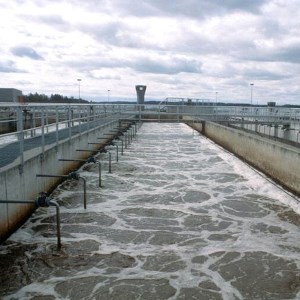Facts:
- Funding: SciLifeLab, Knut & Alice Wallenberg Foundation
- Funding period: 2020-2023

Viral particles from COVID-19 are occurring in human feces and are transported to wastewater treatment plants. Analyses of wastewater therefore allow for detection and monitoring of infection spread in the population without the need for direct interaction with patients.
Sweden, like most countries, was caught short in preparedness by the COVID-19 pandemic with no established environmental epidemiology capability in place. A research group lead by Anna J. Székely from the Department of Aquatic Sciences and Assessment (SLU) have been monitoring COVID-19 rates in Uppsala through wastewater analyses since August 2020. Weekly results are presented on the web site pathogenes.se.
Environmental virus detection has challenges. Low number of virus particles and presence of inhibitors in samples necessitate further methodological improvements. Furthermore, the recent recognition of viral variants with different epidemiological characteristics urges the expansion of virus sequencing for which environmental samples provide an exceptional high-throughput mean.
The researchers from the Department of Aquatic Sciences and Assessment is part of SciLifeLab's Swedish Environmental Epidemiology Center (SEEC) where reserachers from the Department of Aquatic Sciences and Assessment work together with researchers from the Faculty of Veterinary Medicine and Animal Science at SLU and from KTH Royal Institute of Technology. The aim is to develop state-of-the-art methods to improve SARS-CoV-2 analyses from wastewater and help combat the COVID-19 pandemic.
Espinosa-Gongora C, Berg C, Rehn M, Varg JE, Dillner L, Latorre-Margalef N, Székely AJ, Andersson E, Movert E. Early etection of the emerging SARS-CoV-2 BA.2.86 lineage through integrated genomic surveillance of wastewater and COVID-19 cases in Sweden, weeks 31 to 38 2023. Euro Surveill. 2023;28(46):pii=2300595. https://doi.org/10.2807/1560-7917.ES.2023.28.46.2300595
Isaksson F, Lundy L, Hedström A, Székely AJ, Mohamed N. Evaluating the Use of Alternative Normalization Approaches on SARS-CoV-2 Concentrations in Wastewater: Experiences from Two Catchments in Northern Sweden. Environments. 2022; 9(3):39. https://doi.org/10.3390/environments9030039